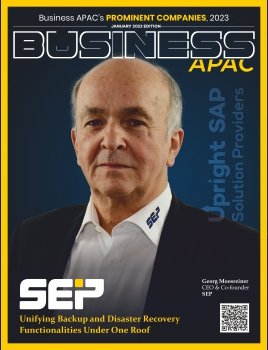Remote work has become integral to flexibility and productivity in contemporary workplaces, facilitated by digital technologies that enable global connectivity. Companies increasingly opt for this model as workforces become more dispersed, but organizations face the unique challenge of maintaining optimal productivity with a healthy work-life balance for remote employees.
Enter time tracking—a powerful tool that goes beyond the conventional clock and holds the key to unlocking the full potential of remote work.
Understanding Time-Tracking Data
Time-tracking tools have come a long way from simple clock-in and clock-out systems. Modern work track software solutions offer comprehensive insights into how employees spend their time throughout the workday.
These tools record not only the hours worked but also the specific tasks undertaken, applications used, and even the level of productivity during certain periods. This wealth of data provides organizations with a detailed overview of their remote workforce’s activities.
Remote Work Challenges
While remote work offers numerous advantages, it also presents unique challenges. One of the primary concerns for employers is ensuring that remote employees remain engaged and productive. Without a physical presence in an office setting, it can be challenging to monitor and manage work effectively.
Time-tracking data emerges as a game-changer in this scenario, offering a transparent and objective view of an employee’s work patterns.
Remote Work Optimization With Time-Tracking Data
Identifying Productivity Patterns
Time-tracking data allows organizations to identify peak productivity periods for each employee. Time-tracking tools empower organizations to delve into the intricacies of their remote workforce’s daily routines, uncovering optimal periods of heightened efficiency for each employee.
By leveraging these insights, employers can strategically plan crucial engagements, such as meetings and collaborative sessions, to align with individual productivity peaks.
This tailored approach not only fosters a culture of enhanced productivity but also ensures that the allocation of time is finely tuned for optimal efficiency across diverse tasks and projects. As organizations navigate the complexities of remote work, the utilization of time-tracking data emerges not only as a necessity but as a cornerstone for achieving unparalleled productivity and success in the modern digital landscape.
Workload Distribution
Workload distribution is a pivotal aspect of effective remote work management, and the insight gained from understanding the time spent on various tasks is instrumental. This detailed knowledge allows employers to intricately balance workloads, identifying instances where employees may be stretched thin or underutilized. Informed decisions by managers to redistribute tasks contribute to a harmonious and equitable workload distribution.
This proactive approach not only mitigates the risk of burnout but also guarantees that every team member is making optimal contributions, fostering a collaborative environment where each individual’s skills and capabilities are utilized to their fullest potential.
Personalized Training and Development

Personalized training and development are essential for cultivating a skilled and adaptive remote workforce. The insights gleaned from time-tracking data offer a detailed view of the skills and tasks employees invest the most time in.
This invaluable information serves as a blueprint for organizations to identify specific areas where additional training or development interventions can be most beneficial. Tailoring training programs to individual needs not only nurtures continuous learning but also propels skill enhancement. Consequently, this approach contributes not only to individual growth but also to the collective advancement of the entire workforce, creating a culture of innovation and expertise within the organization.
Promoting Work-Life Balance
Remote work often blurs the boundaries between professional and personal life. According to research, burnout affects 69% of remote employees, underscoring the persistent nature of this issue within a remote work environment.
Recognizing the potential pitfalls of excessive working hours, time-tracking data emerges as a proactive solution for employers. By monitoring and setting reasonable limits on work hours, organizations can instill a culture that prioritizes the well-being of their remote workforce. This deliberate approach not only fosters a healthier work-life balance but also significantly contributes to long-term job satisfaction, creating a sustainable and fulfilling work environment for employees in the evolving landscape of remote work.
Performance Evaluation
Traditional performance evaluations can be challenging in remote settings. Time-tracking data provides concrete evidence of an employee’s contributions, making evaluations more objective and fair. Managers can assess not just the quantity but also the quality of work, fostering a results-driven culture.
Enhancing Collaboration
Remote teams rely heavily on collaboration tools and communication platforms. Time-tracking data can highlight periods of increased collaboration and identify which tools are most effective. This information allows organizations to optimize their digital infrastructure, ensuring that remote teams have the necessary tools for seamless communication and collaboration.
Final Words
In the age of remote work, leveraging time-tracking data goes beyond mere clock management. At its core, a remote work strategy entails taking steps to optimize productivity, foster employee wellbeing, and ensure its long-term success.
By harnessing the insights provided by these tools, organizations can easily navigate the complexities of virtual workplaces while unleashing the full potential of their remote workforce and redefining work itself. With remote working trends increasing over time, time-tracking data becomes even more vital in creating a productive and sustainable work environment.
ALSO READ: Top 10 IT Companies in India














